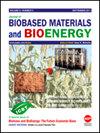Mechanistic Analysis of the Organic Chemistry of Flavonoids in Square Bamboo Leaves Based on Cloud Computing Data Processing
IF 0.5
4区 医学
引用次数: 0
Abstract
In order to be able to better process the relevant experimental data in the organic chemistry study of Flavonoid of Fangzhu leaf, the article applies cloud computing to it, and improves the load factor by applying IWRR load balancing algorithm, selecting CPU processing power, network bandwidth and memory capacity as load factors. The extraction and antioxidant activity of each other’s bamboo leaf flavonoids were studied by ultrasound-assisted ethanol extraction, the best extraction process parameters were found by response surface optimization experiments, and the effects were compared by four extraction methods. The results showed that compared with other extraction methods, the extraction rate of ultrasound-assisted ethanol extraction was the largest, with an average extraction rate of 4.07%, and the antioxidant capacity of the obtained flavonoids was the strongest. 1:25 g/mL material-to-liquid ratio, 80% ethanol concentration, 80 W ultrasonic power, 100 min ultrasonic time and 55.0 °C ultrasonic temperature were the best flavonoid extraction process parameters. And compared with the WRR algorithm and WLC algorithm, the IWRR algorithm has significantly shorter response time, higher throughput and more actual concurrency, i.e., the IWRR algorithm can significantly improve the system loading efficiency. The method used in the article is helpful for the extraction of flavonoids from square bamboo leaves and the processing of related experimental data.基于云计算数据处理的方竹叶黄酮类化合物有机化学机理分析
为了能够更好地处理方竹叶黄酮有机化学研究中的相关实验数据,本文将云计算应用于此,并通过应用IWRR负载平衡算法,选择CPU处理能力、网络带宽和内存容量作为负载因子,提高了负载因子。采用超声波辅助乙醇提取法对竹叶黄酮的提取及抗氧化活性进行了研究,通过响应面优化实验确定了最佳提取工艺参数,并对四种提取方法的效果进行了比较。结果表明,与其他提取方法相比,超声辅助乙醇提取的提取率最大,平均提取率为4.07%,所得黄酮类化合物的抗氧化能力最强。料液比为1:25g/mL、乙醇浓度为80%、超声功率为80W、超声时间为100min、超声温度为55.0°C是提取黄酮类化合物的最佳工艺参数。与WRR算法和WLC算法相比,IWRR算法具有显著更短的响应时间、更高的吞吐量和更多的实际并发性,即IWRR算法可以显著提高系统加载效率。该方法有助于方竹叶黄酮类化合物的提取及相关实验数据的处理。
本文章由计算机程序翻译,如有差异,请以英文原文为准。
求助全文
约1分钟内获得全文
求助全文

 求助内容:
求助内容: 应助结果提醒方式:
应助结果提醒方式:


